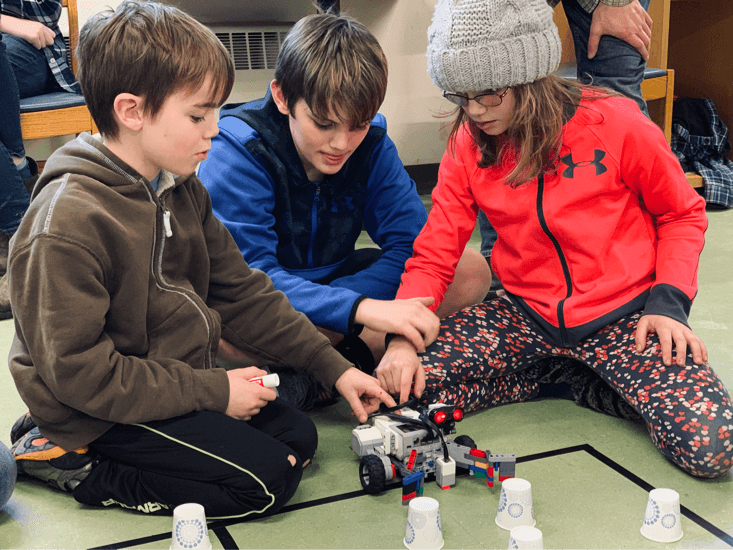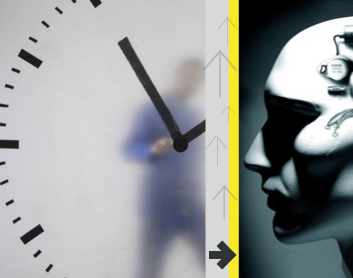
What do Gen Z, the emoji movie and cybersecurity have in common?
I’d like to begin by saying how incredible it is that I can now take my 9-year-old daughter out to dinner and talk about subjects like The Internet of Things, Cybersecurity and Robots. What’s more incredible is that she was totally engaged and had really a unique perspective.
It was a cold winter evening and I decided that a spontaneous dinner out at one of our favorite spots would be a fun treat. It’s rare that my daughter and I get alone time, so this felt like a great chance to talk about things that are current for both of us. I had been heads down working on a project related to automotive cybersecurity and had been struggling to grasp some of the finer technical points related to “CANbus architecture” and “Vectors of attack”. I remember saying something about trying to understand how people can hack cars when my daughter visibly brightened. “Oh. Like the emoji movie where they break down partitions on the phone and he has to reset it” she said before taking another large bite of pizza.
I’ll admit that my jaw dropped and then I smiled broadly. Something I’d been struggling to wrap my head around for days, she had grasped in minutes! The emoji movie was a perfect analogy to understand the concept of installing a firewall to protect against a cyber threat.
New frames of reference
I began thinking about all the other things my Gen Z kids are learning, watching and playing and how their mental models and references are already so different from those that I had at their age. My 12-year-old is coding websites at school and my 6-year-old is a budding IT enthusiast who insists on setting up the wifi connection on all our devices whenever we travel anywhere. While they still have many non-technical hobbies, they are growing up in a world that is being increasingly sculpted by technology.
My daughter recently attended a “Lego Robotics” vacation camp. She had been very enthusiastic about this particular camp, insisting that when she grows up she wants to be a robot designer. I’ll confess that I had distractedly skimmed the promotional materials and was just very relieved that as working parents we had a solid plan in place to keep her busy through the holidays. She came back after the first day buzzing with what she’d learned and talking a mile-a-minute about the lego robot she’d put together. When I went at the end of the week to witness “Robo Olympics” I was fascinated to see what she’d been up to.

The instructor had organized multiple events for the kids to race their robots against each other. These included “cleaning” a series of arranged paper cups from inside a taped square perimeter, moving them through an obstacle course and even dancing! I learned that they’d programmed their robots to perform these activities using a series of object-oriented commands. “How did you make it do that?” I asked my daughter incredulously. She nonchalantly explained that it had sensors behind its eyes and on its base and it was using these to respond to the environment it was in. “It’s the same technology that’s behind a Roomba” her instructor informed me.
Sensors, sensors everywhere
I realized that through this experiential learning, my daughter would be able to understand that a connected car works basically the same way. It also has sensors that tell it how to behave in an environment. The driver assist feature that keeps the connected car in-lane is using sensors to provide this intelligence to the car and much like the robot avoiding the paper cups, it is responding.
This brings me to the second concept in relation to cybersecurity that I’d been able to relay so easily to my daughter during that same memorable dinner: encryption. When we talked about all the connected devices that would make up the IoT world of the future, I explained that one of the problems would be protecting all these tiny sensors from being hacked. Lacking the computational and battery power needed to support many encryption solutions, these small sensors need something more lightweight to protect them. Having spent the week building a robot, my daughter had a solid grasp of what a sensor looked like, and how it worked, so explaining how it could easily be hacked wasn’t something she struggled to understand.
Living with Gen Z
As a product designer, research has always been a critical component of what I do. Human-centered design is core to the methodology I have used with clients across many industries, ranging from cannabis to cybersecurity, with lots of healthcare and fintech in between.
Living with three Gen Z-ers is fascinating and I’m constantly trying to understand how they are making sense of the world. Their attitudes towards technology and ways of learning are intriguing. Whenever they have a question, they yell out to Siri or Alexa to find an answer. They regularly complain about these AI guests in our home who misunderstand their queries. And yet they return to them, again and again, hoping that they will become smarter with their answers. And they do. They taunt them, joke with them and seem to enjoy being in command of them.
I’ve read that in 20 years, most of the jobs that exist now won’t exist anymore and a significant proportion of the workforce will be unemployable. I wonder what my three little people will end up doing with their lives. I hope that whatever it is, their curiosity remains a constant and that they are able to integrate technology in a way that keeps them in equilibrium.


